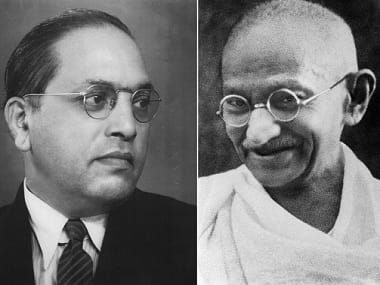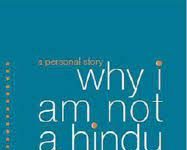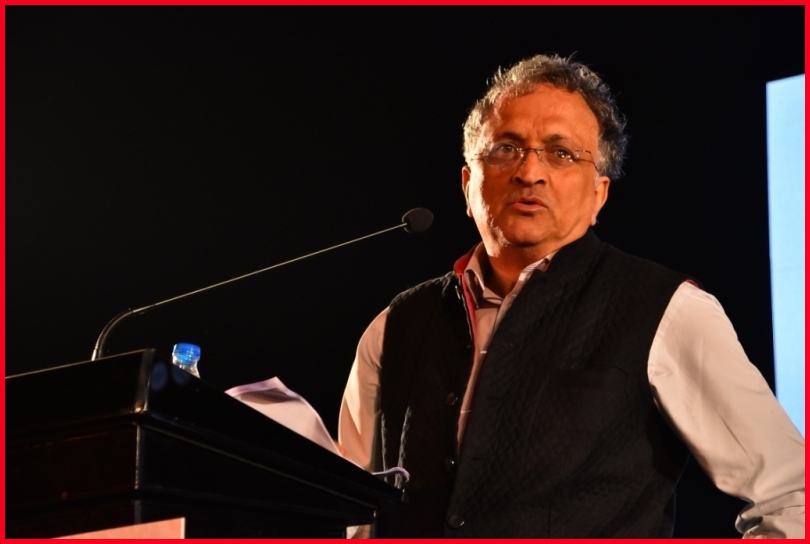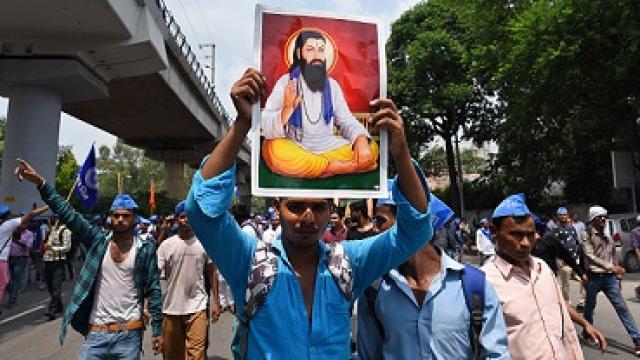Premchand was undoubtedly one of the finest writers and storytellers that India has ever produced, his works continue to hold immense relevance even decades after his passing. However, there is always a long standing debate about how accurately Premchand was able to understand and then articulate the traumatic experience of those who belonged to the downtrodden castes. Could an upper-caste and well to do Kayastha really enter the life-world of the oppressed castes?
In his well-known story “Sadgati”, Premchand depicts little Dukhi as the exploited and helpless tanner who finds it impossible to speak up against his Savarna oppressor Pandit Ghasiram. Dukhi, is the quintessential Dalit man(extremely poor, ill-fed and helpless) who is on his way to approach Pandit Ghasiram for a favour.
But before the pandit agrees to offer him an ear, he is asked to chop an endless pile of wood for him for free.
It is his stark exhaustion and fatigue that make Dukhi collapse on the floor and never get up again. Dukhi is dead. Dukhi’s life is a journey of endless humiliation and exploitation and even in his death he is denied any dignity.
Kites and jackals bite at his dead body and his carcass lies abandoned in the field.
For a life-long commitment and unquestioned devotion to his master, Dukhi gets the most gruesome reward. Dukhi becomes the depiction of a quintessential Dalit- he has internalised the caste system and its inherent hierarchy so deeply that he cannot imagine defying it even in his wildest dreams.
Dukhi doesn’t have a voice, he doesn’t question or articulate dissent, he only serves in silence.
The depiction of a ‘Dalit’ man as a non-articulate, agency less mortal who doesn’t dare question the sanctity of caste hierarchy made Premchand available for criticism.
In another of his major works “Kafan”, there is a depiction of two Dalit protagonists as debauched drunkards who care about nothing but their own addiction to alcohol.
They are so cold and insensitive that when one of the protagonists loses his wife, they spend the money that they had collected for her shroud on alcohol. This story may have been widely read and considered one of Premchand’s pathbreaking works, but again the depiction of the ‘Dalit’ as irresponsible, insensitive and unable to take care of their families won Premchand great criticism.
Premchand wasn’t spared for painting such portraits of Dalit characters and ascribing them roles that denied them either agency to question and reform the system nor did it show them as individuals who could sustain their lives with dignity without the patronage of their upper-caste masters.
Often when we make such a vehement criticism of Premchand’s characterisation of the downtrodden Dalit and his inability to speak up against his exploitation or do anything concrete to improve his life, we forget to look at the many nuanced undertones that Premchand leaves us with.
We forget to see that in his story “Shroud”, Premchand may have depicted the two Dalit protagonists as addicted and irresponsible but even in their intoxicated states, Premchand writes the story in such a way that it raises questions about alienated labour, the indignity and suffering of the downtrodden castes and their deliberating deprivation that doesn’t allow them even the potential to secure two complete meals a day.
Ever since the time Premchand picked up his pen, his characterisations and depictions of the lower castes has been subjected to controversy and critics have gone on to ask whether a privileged Kayastha could ever truly articulate and understand the suffering of the lower castes. Is it possible for someone who has not experienced the atrocity of caste to articulate such suffering?
Yes, it’s quite true that Premchand belonged to a privileged caste but his depiction of the upper castes revealed the pathology of the caste system and how it went against the very ethos of a just and humanitarian social order.
He depicts landlords, priests and other caste men and women as the emblems of an unequal society that continues to hoard resources, practice exploitation and continue the regime of deprivation for a large number of people belonging to the lower castes.
He goes on to remind us that even a quintessential resources such as water was treated as the monopoly of the upper castes and that inhumanity and absence of egalitarian values characterised this exploitative regime. Instead of choosing to write from the upper caste point of view, Premchand chose to write from the Dalit point of view and expose the follies within the caste system.
His works were a sharp critique of the caste system and the oppression it inflicted on those who it considers to be on its margins. In fact, in his characters such as Dukhi and Shankar(the lead character in his story
‘ Sawa Ser Gehun’) the sense of complete resignation to the pathology of the oppression of the Dalits cannot be overlooked.
In both these stories, the Dalit men find themselves helpless and witness without agency a caste system that oppresses and marginalises them.
Premchand articulates with great sensitivity how the lives of Dalits were extremely difficult and how they were ill-treated, humiliated and treated worse than animals on a day to day basis.
His poignant observation of the caste hierarchy also pinpoints at the fact that the ‘inferiority’ or ‘impurity’ of the Dalit is so embedded in the Hindu upper caste psyche that they had invented a vast repertoire of gestures, symbols, idioms, verbal and psychic denigrations of the Dalits.
In Premchand’s work ‘Thakur ka Kuan’, the rebel character of a Dalit woman who challenges the sole access of the landlord to a well of clean water, is an example of how an interesting interjection can be seen in Premchand’s depiction of his female characters.
She may not be in a position to overthrow the caste order, but by questioning and resisting upper caste supremacy she stands alive like a ray of hope.
In his short story ‘Mandir’, an important question regarding Dalit accessibility to places of worship is brought forward. This question continues to echo even in the contemporary age as Dalits continue to be deprived of even equal access to God.
Premchand was writing at a time when no significant movements for the assertion of Dalit rights had taken place nor was there a nationwide collective movement against caste oppression .
It would not be wrong to say that for his times, Premchand was putting forward a radical caste discourse much like Ambedkar did later on in the realm of politics.
He did what best he could offer through the literary domain and brought forward a consciousness that was both ahead of his times and vehemently challenged caste hierarchy and an inhumane man-to-man interaction that it burdened the collective-conscience with.
His masterpieces ‘Godaan’, ‘Prema’, ‘Rangbhoomi’ and ‘Pratigya’ were all written at a time when neither a collective movement against caste oppression had taken place nor was it common for an upper caste man to vehemently oppose the caste system in favour of the lower caste. Thus as we read Premchand’s works in contemporary times, what we cannot negate is his immense sensitivity to caste oppression and his ability to vehemently oppose such an oppressive system with his profound art of storytelling. He was one of the very few writers of his time who used their pens to write in opposition of caste hierarchy and the patriarchal subjugation of women. The issues that he raised, the debates that he ignited through his short stories and novels will forever remind us of his literary genius and his ability to merge the literary with the socio-political. His works appear more and ore relevant to the contemporary times as we find the social fabric being torn apart by the forces of communalism, caste violence and parochialism. His plethora of writing certainly deserves renewed interest as the country faces multiple rots in its social fabric.
As one of the most prolific writers the nation has ever produced, Premchand’s deep affinity with the common man and his ability to understand so intensely the pain and struggles of the untouchables and the marginalised people, is really commendable.
His range and diversity were indeed limitless as he tackled themes as diverse as romance, satire, gender politics, social inequality and deep compassion. He indeed was at the highest peak of understanding human vulnerabilities and strengths.










